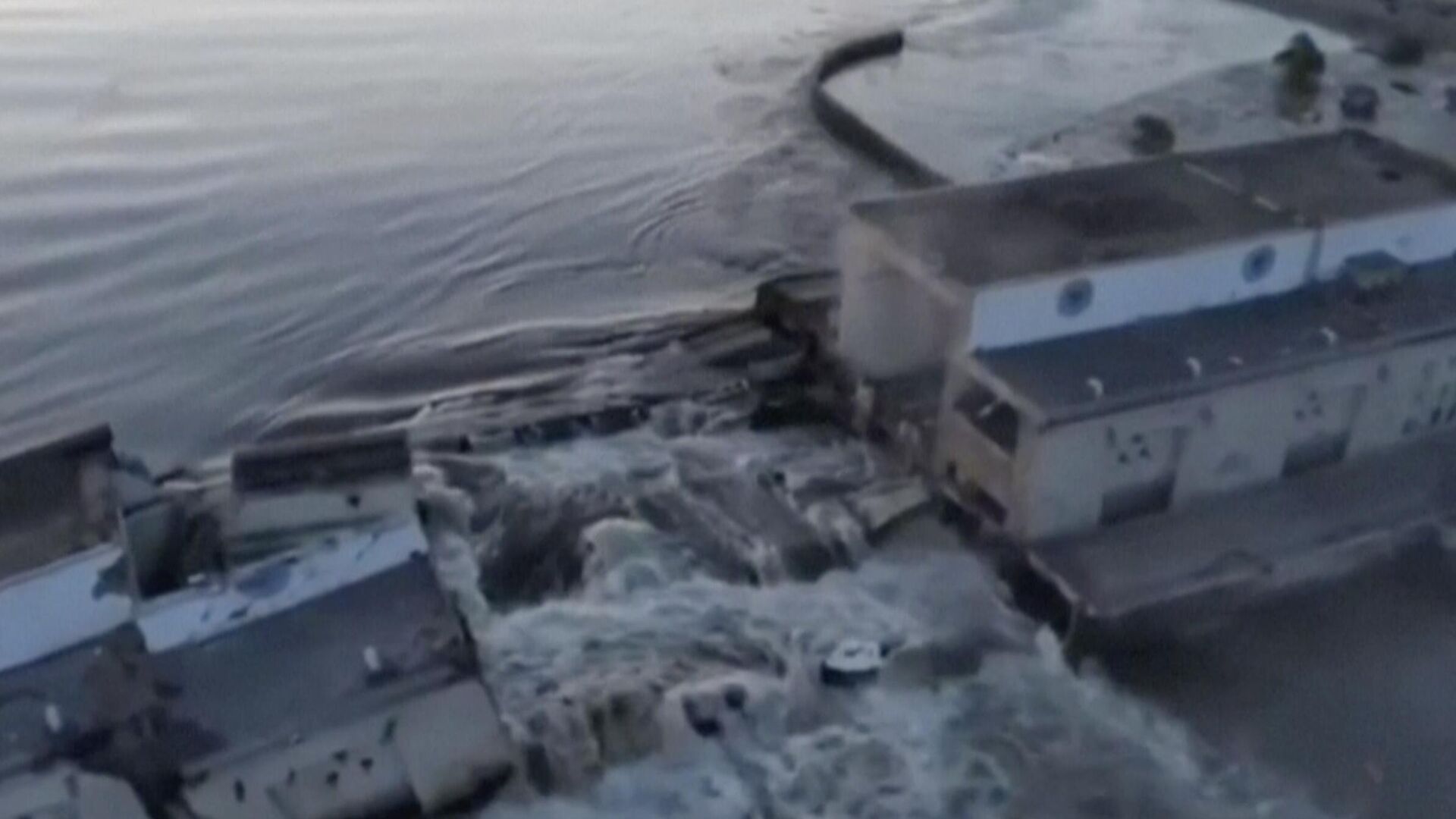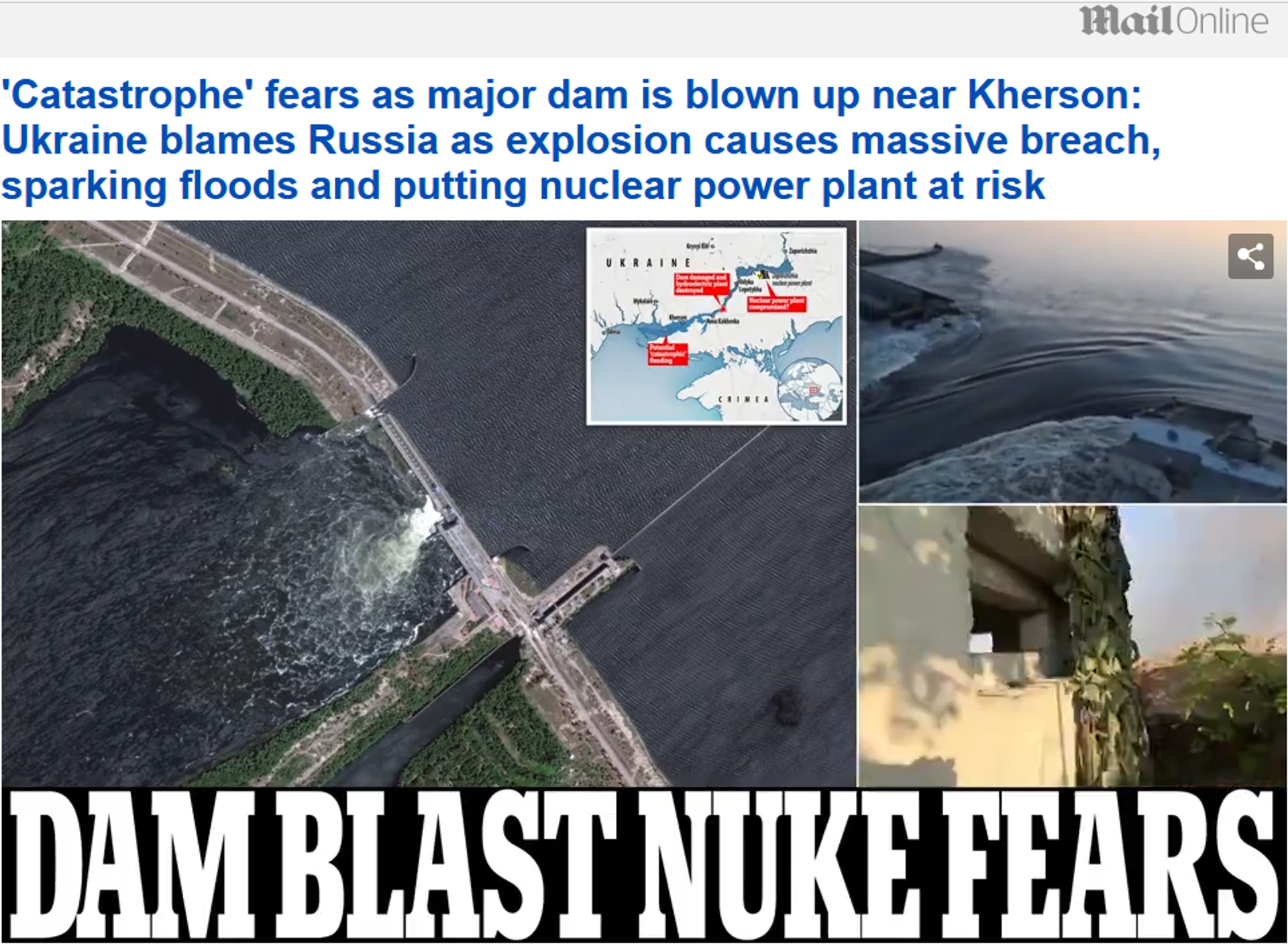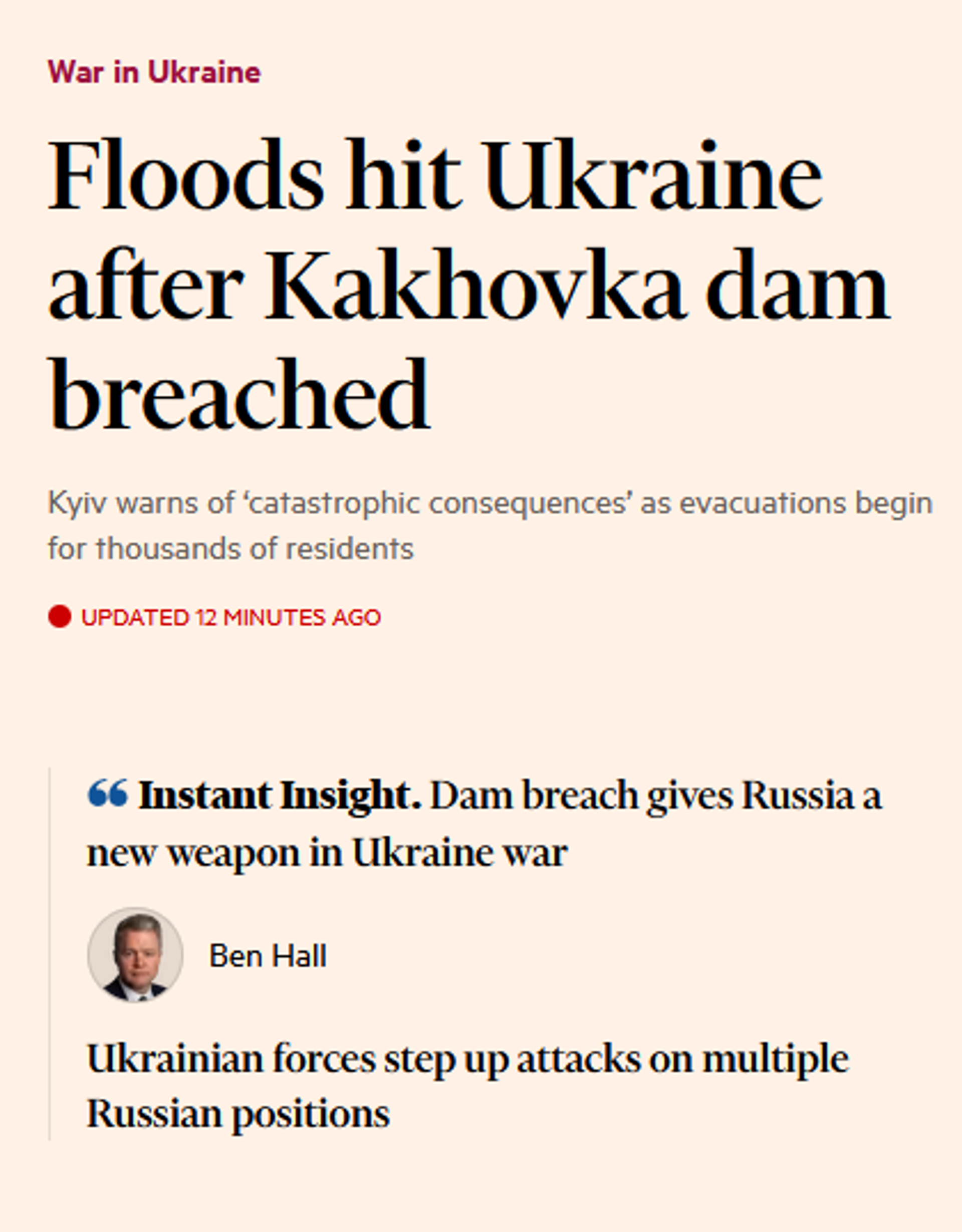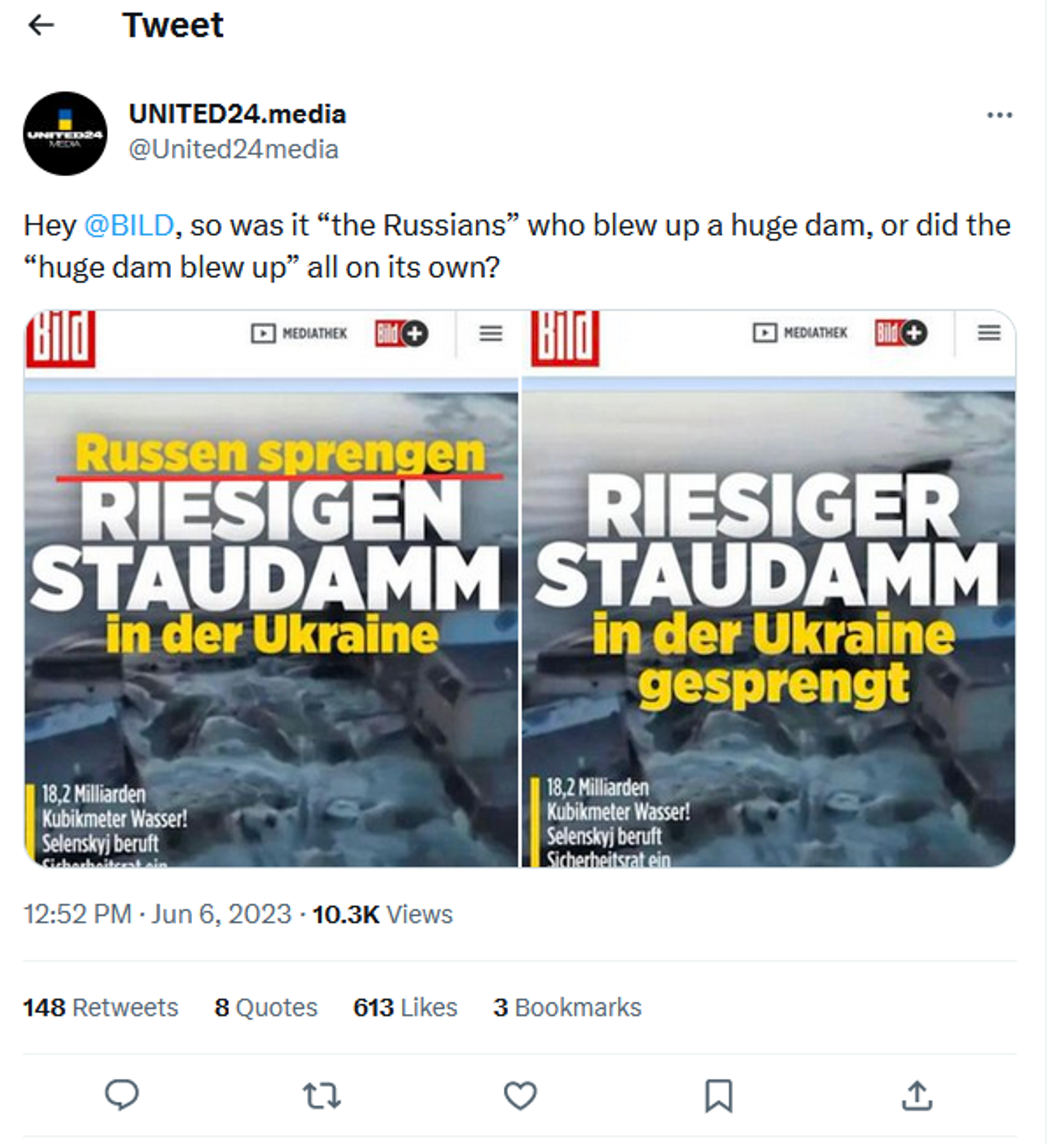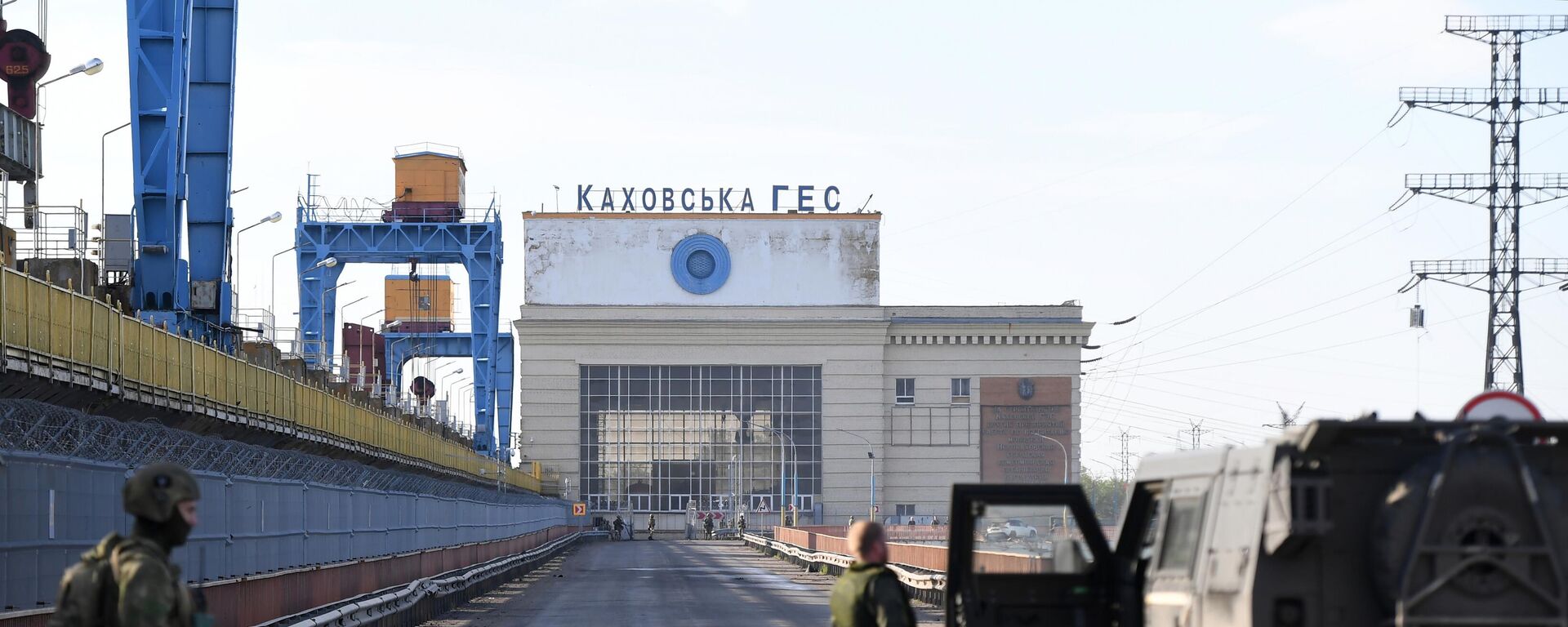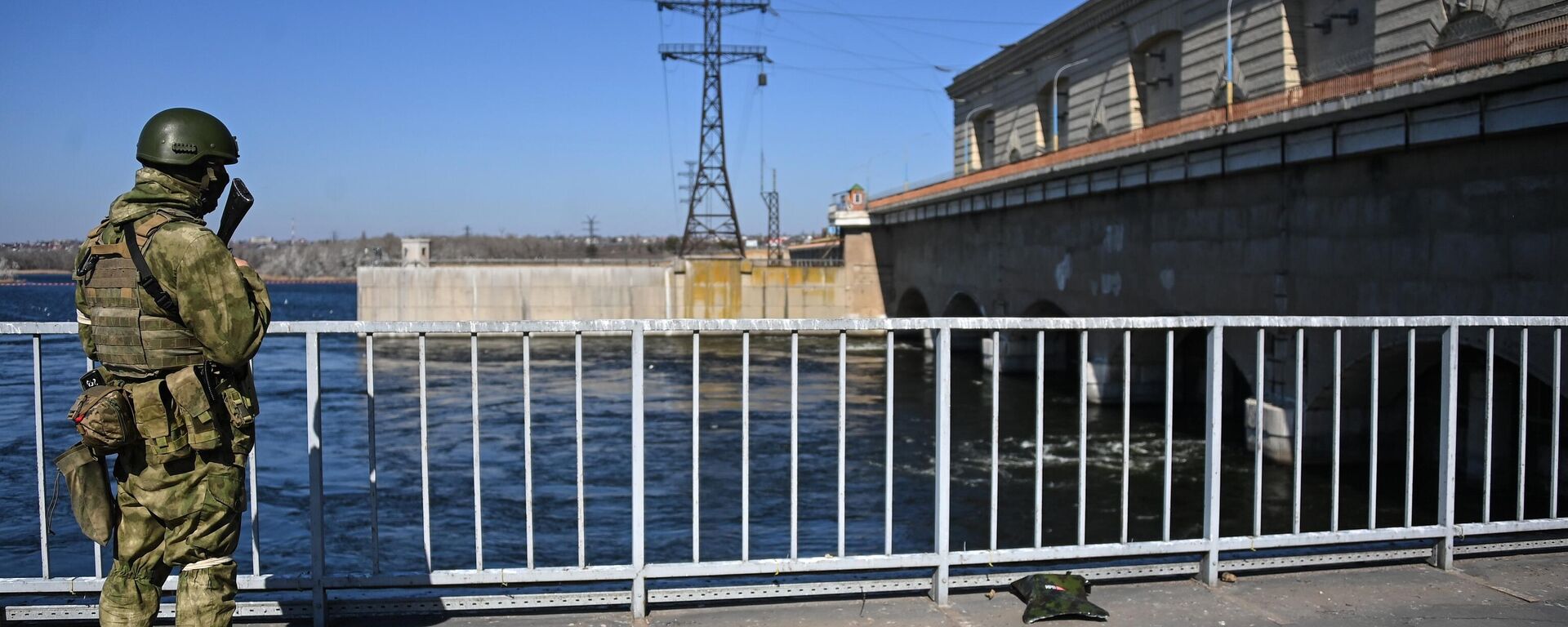https://sputnikglobe.com/20230606/fact-check-who-attacked-novaya-kakhovka-dam-1110946820.html
Fact Check: Who Attacked Novaya Kakhovka Dam?
Fact Check: Who Attacked Novaya Kakhovka Dam?
Sputnik International
The Kakhovka Hydroelectric Power Plant suffered heavy damage Tuesday , with its dam destroyed and water flowing uncontrollably downstream, risking major flooding, power cuts and water shortages on both sides of the Dnepr River.
2023-06-06T12:32+0000
2023-06-06T12:32+0000
2023-07-23T08:58+0000
russia's special operation in ukraine
russia
dnieper
ukraine
nato
united nations security council
hydroelectric power
hydroelectric power station
dnepr
attack on novaya kakhovka dam
https://cdn1.img.sputnikglobe.com/img/07e7/06/06/1110950577_0:125:2387:1468_1920x0_80_0_0_788a40d3cf678bb1bc86ec28c590c80e.jpg
The Kakhovka hydroplant’s dam has become the latest piece of civilian infrastructure to be destroyed in the ongoing proxy war NATO wages against Russia in Ukraine.Situated in Kherson Region along the Dnepr River, the plant was built in 1956 in the town of Novaya Kakhovka. In addition to generating electricity, the plant and its dam served to create the Kakhovka Reservoir – a massive, 2,150+ square kilometer, 240 km long pool of 18.2 billion cubic meters of freshwater. This reservoir feeds the Kherson, Zaporozhye and Dnepropetrovsk regions, regulating the flow of water along the Dnepr, preventing floods, and providing fresh water to the North Crimean, Kakhovka, and Dnepr-Krivoy Rog canals. In addition, it feeds local mines, factories and settlements, provides water for farming, and, crucially – ensures the supply of water used for cooling to the Zaporozhye Nuclear Power Plant.15 Months of Russian WarningsRussian forces established control over the Kakhovka hydroplant on the day Moscow launched its special military operation in Ukraine on February 24, 2022, signaling its strategic importance. Ukrainian forces almost immediately began shelling areas around the plant and its dam using long-range artillery and tactical missiles, including Tochka-U and HIMARS. Ukrainian forces also carried out shelling attacks against the city of Novaya Kakhovka itself, killing and injuring dozens of local residents.Last August, the Kakhovka plant's deputy director for reconstruction sounded the alarm about the threat that the dam’s destruction would pose to the downstream Zaporozhye NPP, saying "problems with the dam at the Kakhovka HPP" could "lead to a nuclear disaster" at the power plant. That's because nuclear fuel requires a steady supply of cool water to prevent meltdowns and radioactive contamination.Russia moved to evacuate civilians and troops from the right bank of the Dnepr River last October in part due to concerns about Ukrainian forces' potential destruction of the Kakhovka hydroplant’s dam.The same month, Russia circulated a letter at the United Nations Security Council on the situation around the plant, with Russian Permanent Representative Vassily Nebenzya accusing Kiev of a "monstrous provocation" involving the shelling of Novaya Kakhovka using up to 120 missiles and shells daily over a five-month period. Nebenzya warned at the time that if the dam was destroyed, it could leads to thousands of civilian casualties, and untold damage to local civilian infrastructure along the Dnepr.MSM Rush to JudgementNebenzya's warnings were ignored, and seven months later, came to pass. However, instead of remembering or taking heed of Moscow's concerns, most Western media have, as expected, rushed to blame Russia for this latest act of terrorism against civilian infrastructure.US media proved just as eager to carry water for Kiev and its NATO patrons, with one major network entitling its piece on the story "Destruction of critical Ukraine dam is 'ecocide', Zelensky aide says."A common theme among most Western mainstream outlets’ coverage has been an eagerness to serve as stenographers for Zelensky and his foreign backers, with quotations focusing on what Ukrainian authorities said, texts featuring the worn-out refrain about "Russian aggression," and authors feigning ignorance about the year Moscow has spent warning about Ukrainian artillery attacks on the hydroplant.It took a tabloid to show a bit of fortitude and just a dash of journalistic integrity, with Germany’s Bild newspaper removing the words "Russians Blow Up" from their headline story, re-titling it simply "Huge Dam in Ukraine Destroyed", and immediately sparking outrage from Ukrainian media. The story features the same old anti-Russian tropes, relying solely on Ukrainian government and military sources and failing to cite a single Russian source. But at least the headline isn't just blatant propaganda anymore.Using the MSM’s logic, it’s totally rational for Russia to preemptively destroy its own multi-billion dollar infrastructure, force the evacuation of nearby settlements, threaten Crimea’s supply of fresh water (which the peninsula restored last year only after a grueling eight yearlong water blockade by Kiev) and potentially threaten the Zaporozhye NPP's critical cooling systems.The tone taken in Western reporting, perhaps inevitable given NATO’s proxy war with Russia, is eerily reminiscent of the Western media's takes on two other major sabotage campaigns: the shelling of the ZNPP, and last year's attack on the Nord Stream pipeline network. In those cases too, the legacy media party line has been that the Russians are attacking their own infrastructure. But each time, including after Tuesday’s attack on the Kakhovka Hydroelectric Power Plant, the key question that the MSM has failed in answer is: why?'No Novelty Here'"In fact, this is nothing special. This is part of the same campaign on the destruction of the Donbass, of the civilian population and civilian infrastructure that has been going on since 2014. There is no novelty here," Alexey Podberezkin, director of the Center of Military-Political Studies at the Moscow State Institute of International Relations, told Sputnik.Asked if Tuesday’s attack will impact the safety of the Zaporozhye NPP, the expert said he was more concerned about Ukrainian artillery attacks on the nuclear power plant. "The [cooling] ponds are not protected, they aren't covered under some kind of roof, armored or otherwise. All these stocks and waste materials are radioactive, and can be destroyed by several bullseye hits using large-caliber projectiles," Podberezkin said.
https://sputnikglobe.com/20230606/what-do-we-know-about-kakhovka-hydroelectric-power-plant-attacked-by-kiev-forces-1110941220.html
https://sputnikglobe.com/20220813/live-updates-donetsk-shelled-by-ukrainian-troops-dpr-mission-to-jccc-says-1099533398.html
https://sputnikglobe.com/20230606/part-of-kakhovka-hydroelectric-power-plant-destroyed-by-ukrainian-shelling-1110939396.html
https://sputnikglobe.com/20230531/ukrainian-shelling-could-turn-europe-into-uninhabitable-radioactive-ruin-heres-why-1110822308.html
russia
dnieper
ukraine
Sputnik International
feedback@sputniknews.com
+74956456601
MIA „Rossiya Segodnya“
2023
News
en_EN
Sputnik International
feedback@sputniknews.com
+74956456601
MIA „Rossiya Segodnya“
Sputnik International
feedback@sputniknews.com
+74956456601
MIA „Rossiya Segodnya“
kakhovka dam attack, nova kakhovka dam, kakhovka dam location, kakhovka reservoir water level, kakhovka dam news, kakhovka dam, kakhovka dam flood map, news about dam, news about kakhovka dam, news about kakhovka reservoir, kakhovka hydroelectric power plant, who controls nova kakhovka dam, nova kakhovka dam, kakhovka dam destroyed, major dam destroyed in southern ukraine, kakhovka hydroelectric power plant, nova kakhovka dam bridge, kakhovka hydroelectric dam, kakhovka dam nuclear power plant, kakhovka hydroelectric power plant 351mw
kakhovka dam attack, nova kakhovka dam, kakhovka dam location, kakhovka reservoir water level, kakhovka dam news, kakhovka dam, kakhovka dam flood map, news about dam, news about kakhovka dam, news about kakhovka reservoir, kakhovka hydroelectric power plant, who controls nova kakhovka dam, nova kakhovka dam, kakhovka dam destroyed, major dam destroyed in southern ukraine, kakhovka hydroelectric power plant, nova kakhovka dam bridge, kakhovka hydroelectric dam, kakhovka dam nuclear power plant, kakhovka hydroelectric power plant 351mw
Fact Check: Who Attacked Novaya Kakhovka Dam?
12:32 GMT 06.06.2023 (Updated: 08:58 GMT 23.07.2023) The Kakhovka Hydroelectric Power Plant suffered heavy damage Tuesday morning, with its dam destroyed and water flowing uncontrollably downstream, risking major flooding, power cuts and water shortages on both sides of the Dnepr River. Western legacy media quickly blamed Moscow for the attack. But does that allegation make sense? Sputnik explores.
The Kakhovka hydroplant’s dam has become the latest piece of civilian infrastructure to be destroyed in the ongoing proxy war NATO wages against Russia in Ukraine.
Situated in Kherson Region along the Dnepr River, the plant was built in 1956 in the town of Novaya Kakhovka. In addition to generating electricity, the plant and its dam served to create the Kakhovka Reservoir – a massive, 2,150+ square kilometer, 240 km long pool of 18.2 billion cubic meters of freshwater. This reservoir feeds the Kherson, Zaporozhye and Dnepropetrovsk regions, regulating the flow of water along the Dnepr, preventing floods, and providing fresh water to the North Crimean, Kakhovka, and Dnepr-Krivoy Rog canals. In addition, it feeds local mines, factories and settlements, provides water for farming, and, crucially – ensures the supply of water used for cooling to the Zaporozhye Nuclear Power Plant.
15 Months of Russian Warnings
Russian forces established control over the Kakhovka hydroplant on the day Moscow launched its
special military operation in Ukraine on February 24, 2022, signaling its strategic importance. Ukrainian forces almost immediately began shelling areas around the plant and its dam using
long-range artillery and
tactical missiles, including
Tochka-U and
HIMARS. Ukrainian forces also carried out shelling attacks against the city of Novaya Kakhovka itself, killing and injuring dozens of local residents.
Last August, the Kakhovka plant's deputy director for reconstruction
sounded the alarm about the threat that the dam’s destruction would pose to the downstream Zaporozhye NPP, saying "problems with the dam at the Kakhovka HPP" could "lead to a nuclear disaster" at the power plant. That's because nuclear fuel requires a steady supply of cool water to prevent meltdowns and radioactive contamination.
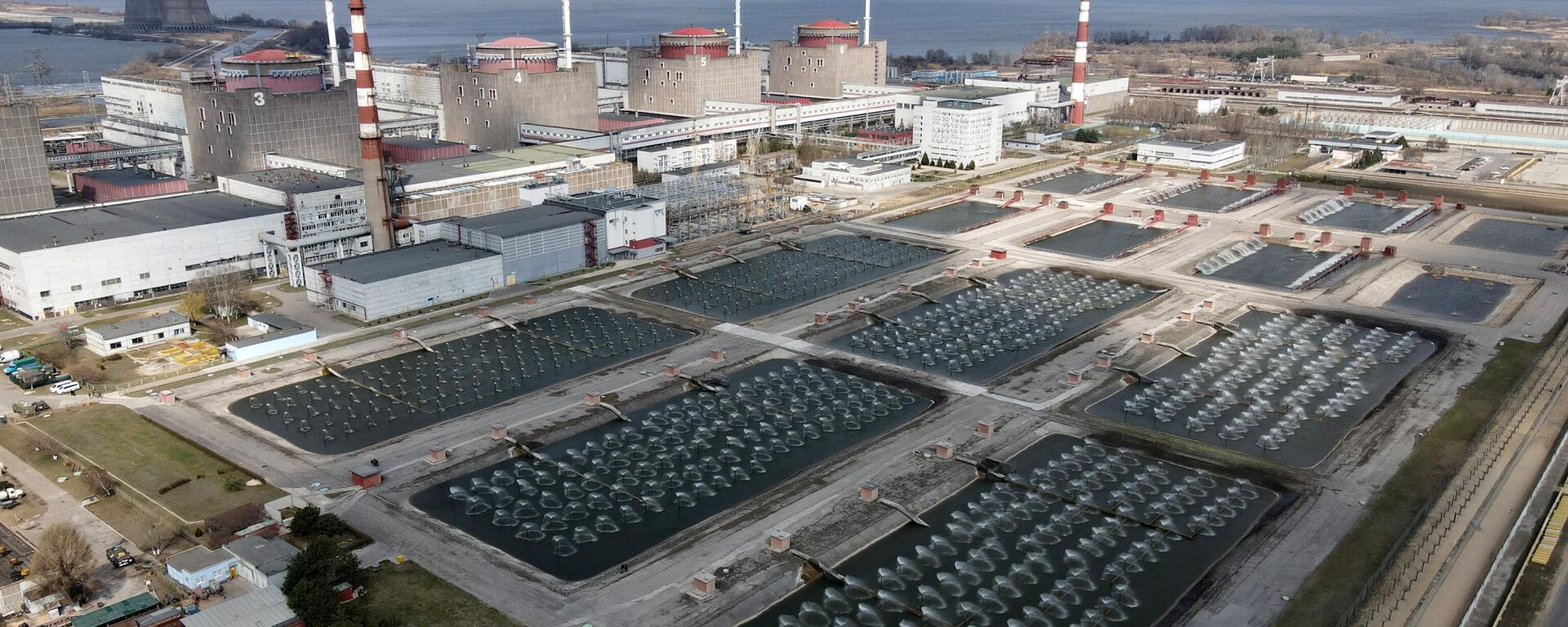
13 August 2022, 04:38 GMT
Russia moved to evacuate civilians and troops from the right bank of the Dnepr River last October in part due to concerns about
Ukrainian forces' potential destruction of the Kakhovka hydroplant’s dam.
The same month, Russia circulated a letter at the United Nations Security Council on the situation around the plant, with Russian Permanent Representative Vassily Nebenzya accusing Kiev of a "monstrous provocation" involving the shelling of Novaya Kakhovka using up to 120 missiles and shells daily over a five-month period. Nebenzya
warned at the time that if the dam was destroyed, it could leads to thousands of civilian casualties, and untold damage to local civilian infrastructure along the Dnepr.
Nebenzya's warnings were ignored, and seven months later, came to pass. However, instead of remembering or taking heed of Moscow's concerns, most Western media have, as expected, rushed to blame Russia for this latest act of terrorism against civilian infrastructure.
"Europe’s largest nuclear power plant at risk as Russians accused of bombing dam," one major British outlet wrote. "'Catastrophe' fears as major dam is blown up near Kherson: Ukraine blames Russia as explosion causes massive breach, sparking floods and putting nuclear power plant at risk," another opined. "Zelensky condemns Russian 'terrorists' after dam attack," a third said.
US media proved just as eager to carry water for Kiev and its NATO patrons, with one major network
entitling its piece on the story "Destruction of critical Ukraine dam is 'ecocide', Zelensky aide says."
A common theme among most Western mainstream outlets’ coverage has been an eagerness to serve as stenographers for Zelensky and his foreign backers, with quotations focusing on what Ukrainian authorities said, texts featuring the worn-out refrain about "Russian aggression," and authors feigning ignorance about the year Moscow has spent warning about Ukrainian artillery attacks on the hydroplant.
It took a tabloid to show a bit of fortitude and just a dash of journalistic integrity, with Germany’s Bild newspaper removing the words "Russians Blow Up" from their headline story, re-titling it simply "Huge Dam in Ukraine Destroyed", and immediately sparking outrage from Ukrainian media. The story features the same old anti-Russian tropes, relying solely on Ukrainian government and military sources and failing to cite a single Russian source. But at least the headline isn't just blatant propaganda anymore.
Using the MSM’s logic, it’s totally rational for Russia to preemptively destroy its own multi-billion dollar infrastructure, force the evacuation of nearby settlements, threaten Crimea’s supply of fresh water (which the peninsula restored last year only after a grueling eight yearlong water blockade by Kiev) and potentially threaten the Zaporozhye NPP's critical cooling systems.
The tone taken in Western reporting, perhaps inevitable given NATO’s proxy war with Russia, is eerily reminiscent of the Western media's takes on two other major sabotage campaigns: the shelling of the ZNPP, and last year's
attack on the Nord Stream pipeline network. In those cases too, the legacy media party line has been that the Russians are attacking their own infrastructure. But each time, including after Tuesday’s attack on the Kakhovka Hydroelectric Power Plant, the key question that the MSM has failed in answer is:
why?"In fact, this is nothing special. This is part of the same campaign on the destruction of the Donbass, of the civilian population and civilian infrastructure that has been going on since 2014. There is no novelty here," Alexey Podberezkin, director of the Center of Military-Political Studies at the Moscow State Institute of International Relations, told Sputnik.
"The dam was shelled more than once. Our military, including forces stationed there, tried their best to prevent this. But when the other side started firing from 300-mm systems – and it was these systems that were used against this dam, nothing more could be done here. The Ukrainian armed forces have been striving to blow up the Kakhovka dam for a long time. Well, they got what they wanted," Podberezkin lamented.
Asked if Tuesday’s attack will impact the safety of the Zaporozhye NPP, the expert said he was more concerned about Ukrainian artillery attacks on the nuclear power plant. "The [cooling] ponds are not protected, they aren't covered under some kind of roof, armored or otherwise. All these stocks and waste materials are radioactive, and can be destroyed by several bullseye hits using large-caliber projectiles," Podberezkin said.
